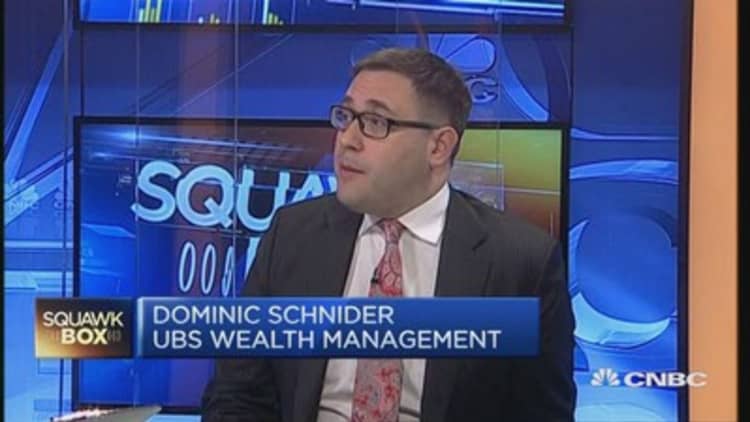The Aussie dollar has strengthened even as prices of iron ore—the nation's largest export—dropped, but strategists aren't betting that will continue, predicting more losses for the commodity currency.
Prices of the key steel-making ingredient have recently risen above $40 a ton, but are still down nearly 11 percent over the past month. During the same period, the Australian dollar, or Aussie, dollar rose more than 1 percent.
Usually, sliding demand for iron ore eats into demand for the local dollar as well the country's terms of trade, or the money Canberra collects from exports relative to what it spends on imports. This time around, however, the Aussie seems to holding up fairly well. On Tuesday, the currency traded in sight of 73 U.S. cents, a level breached earlier this month.
But come March, it could fall as low as 68 U.S. cents, warned Sean Callow, senior currency strategist at Westpac.

Right now, there are two primary elements underpinning Aussie strength, but it's unlikely they can continue to offset a renewal of the commodity rout next year, he said.
"One factor that is supporting the currency right now is non-traditional investors' demand for assets that aren't linked to the economic cycle. Commercial property has been a big one recently," Callow said.
Strong merger and acquisition (M&A) inflows has also been another supportive element, he added.
The pain in commodities has made the sector especially attractive, with data from Dealogic showing announced deals among Australian commodity firms increasing 40 percent in 2015. Elsewhere, the logistics sector was in the limelight as well this year, with Japan Post's purchase of Toll Holdings for $6.5 billion and Brookfield Infrastructure's $8.9-billion takeover bid for Asciano.
But as more analysts predict an extension of the iron ore rout next year, commercial property deals and M&A volumes may be unable to prop up the Aussie much longer.
Iron ore stockpiles at Chinese ports hit their highest level in seven months this week, fueling fears of a prolonged supply glut. Australia's Department of Industry and Science recently cut its 2016 average iron ore price forecast to $41.30 a ton from earlier estimates of $51.20, while National Australia Bank believes prices could fall to $30 a ton.
"The Aussie has stalled ahead of 0.73 as long bets on China stimulus stuffing ore bulls have cooled on profit-taking. Caution may take over from here," warned Vishnu Varathan, senior economist at Mizuho Bank, in a Monday note.
He wasn't alone in urging caution.
"In the long run, you're still going to see a lower Aussie dollar," echoed Dominic Schneider, head of commodity and APAC Forex at UBS Wealth Management, citing September quarter data that revealed an A$18.1 billion current account deficit and a 2.4 percent fall in the terms of trade on goods and services.
Schnider told CNBC he's expecting sub-70 levels for the currency, forecasting it to hit 65 U.S. cents in the next six to twelve months.



